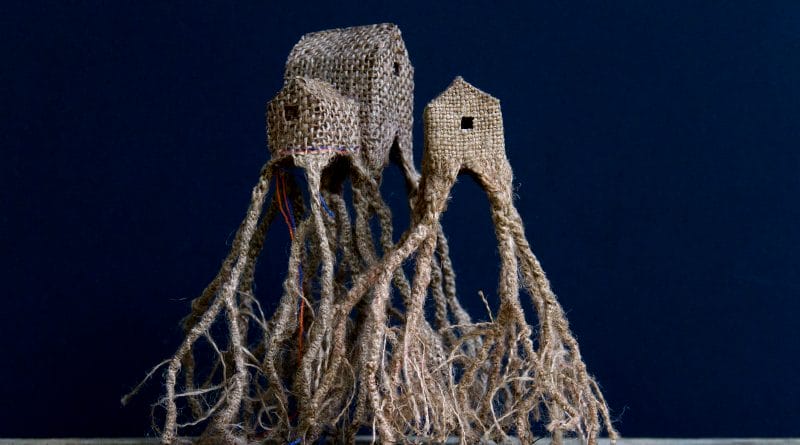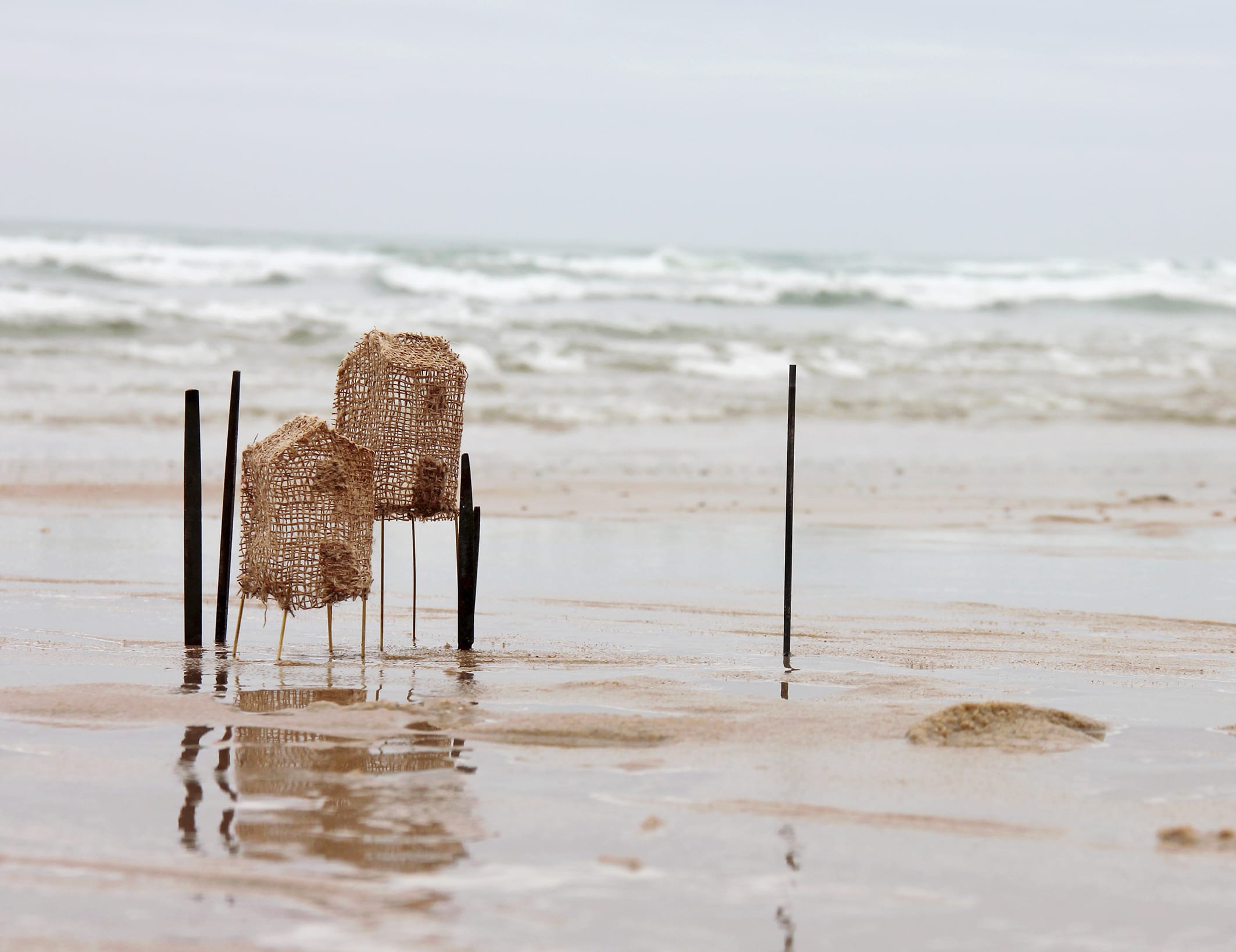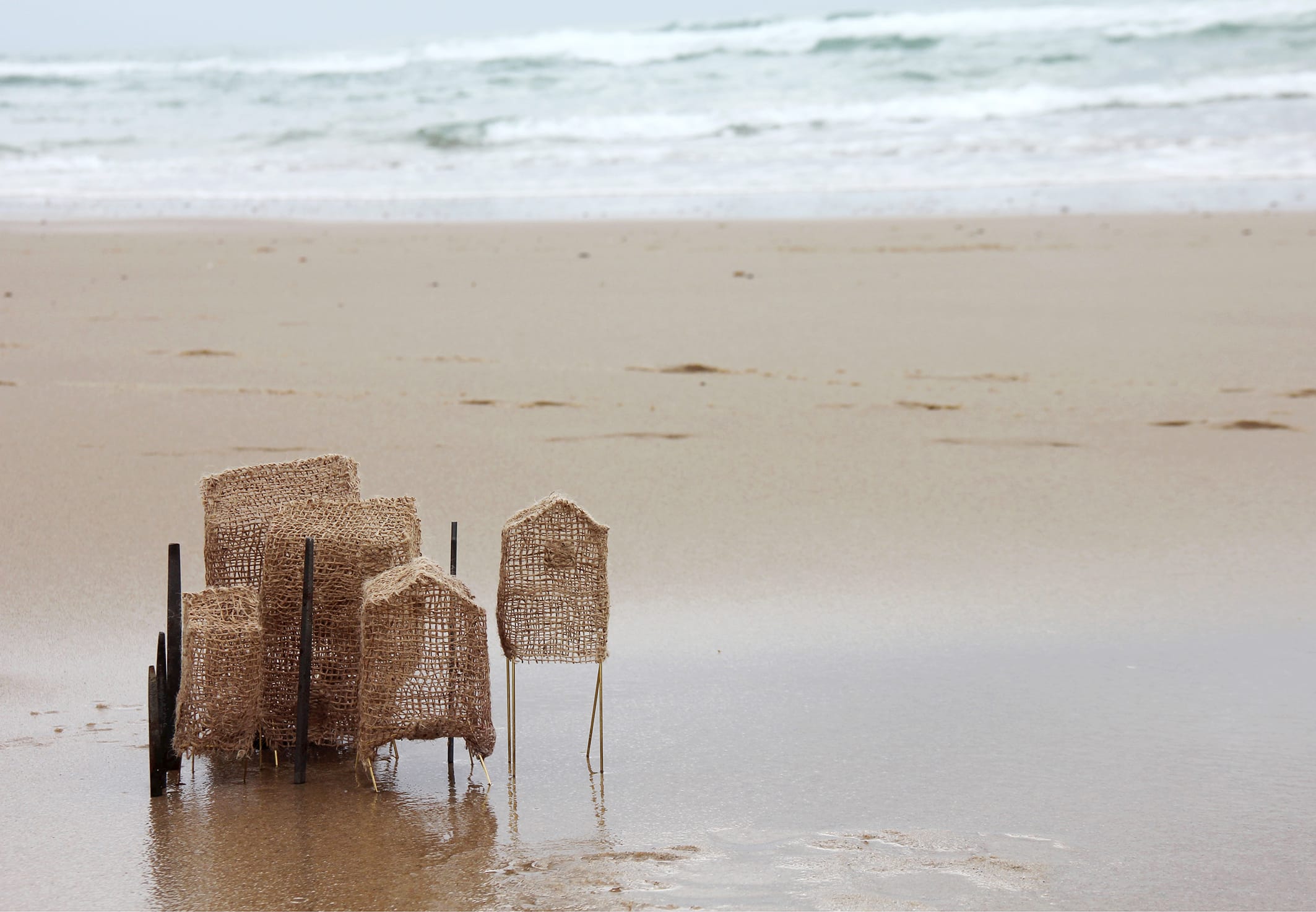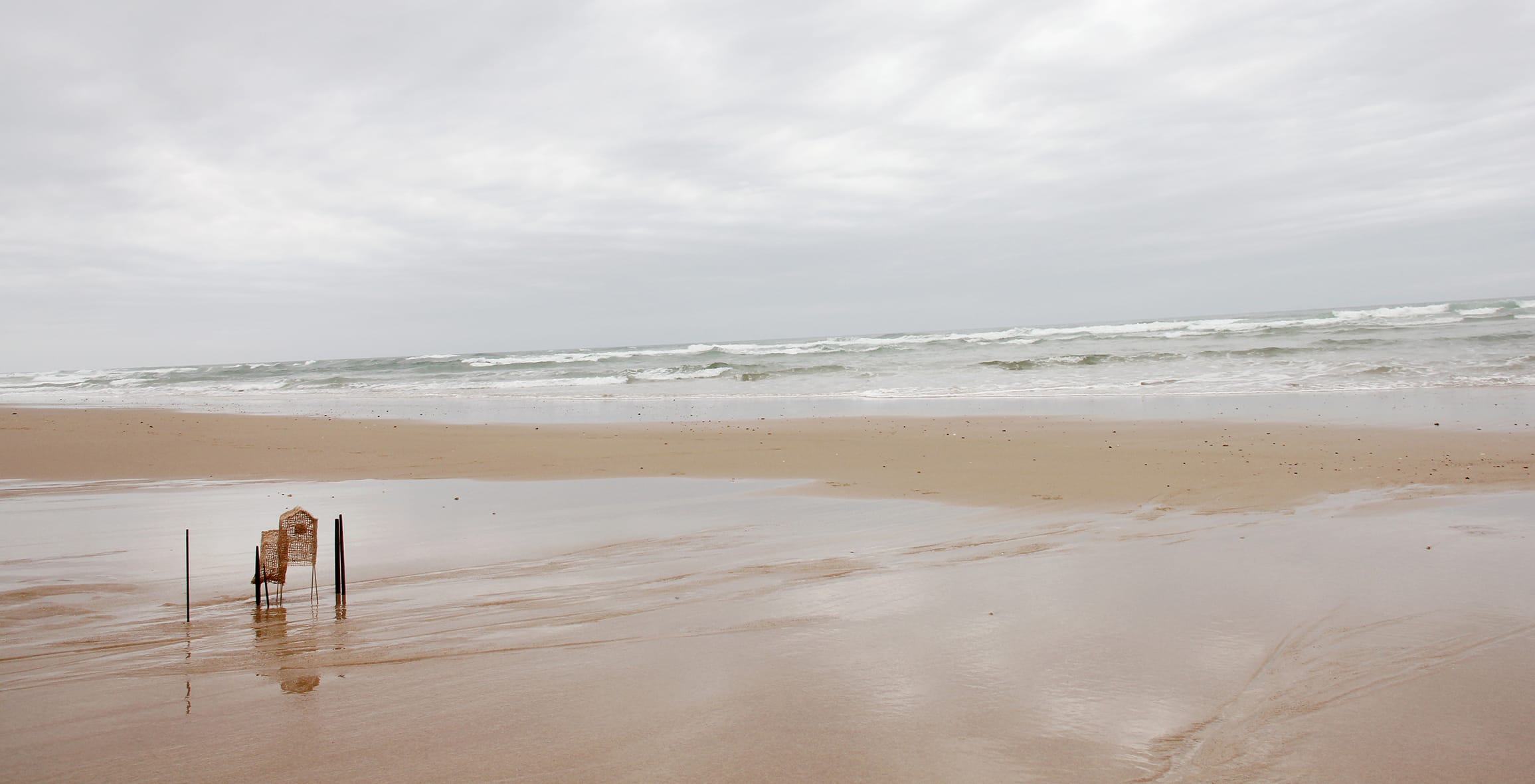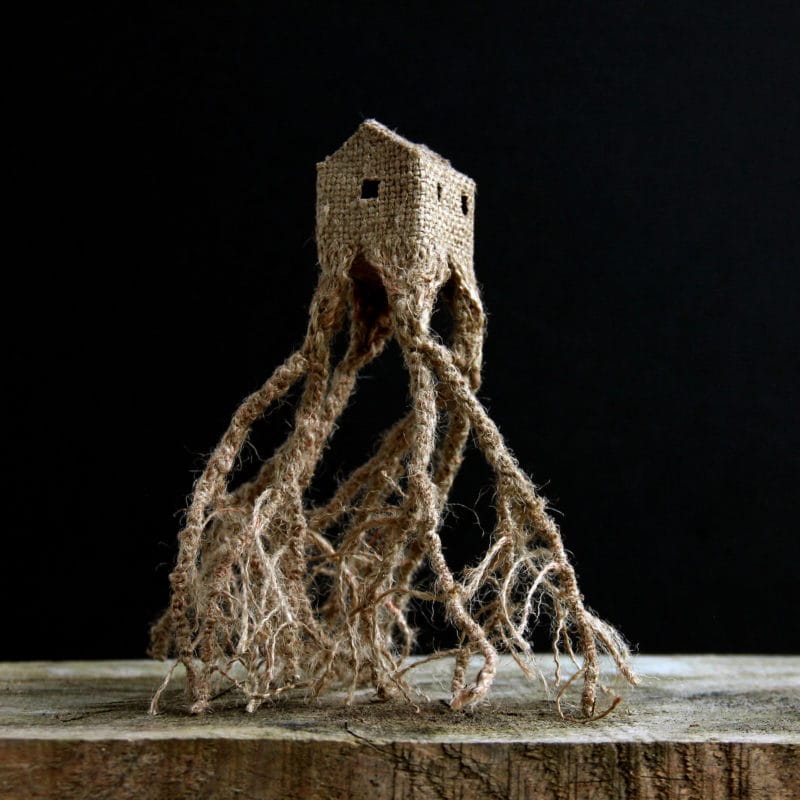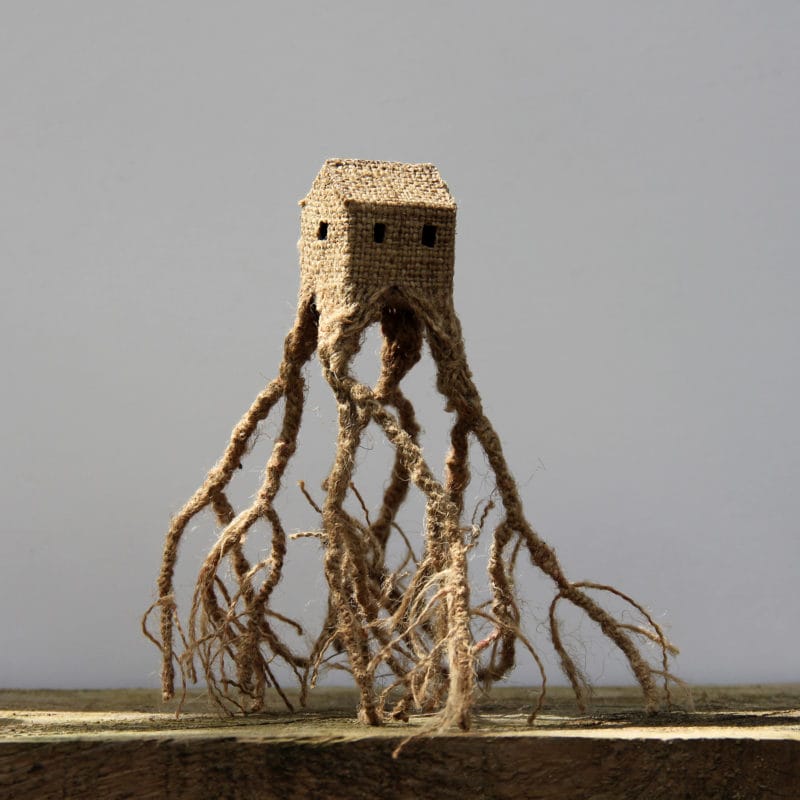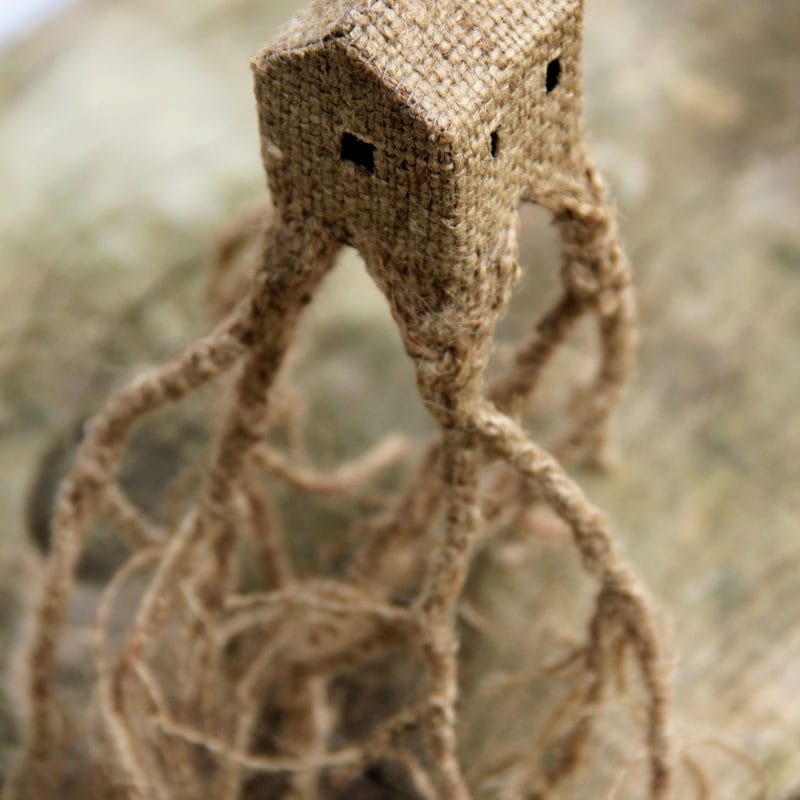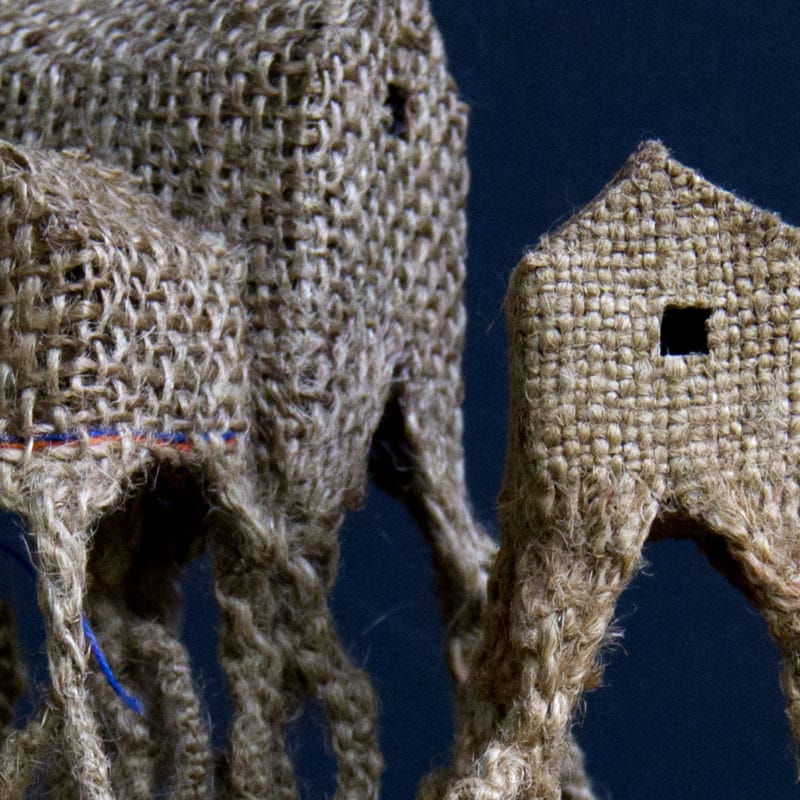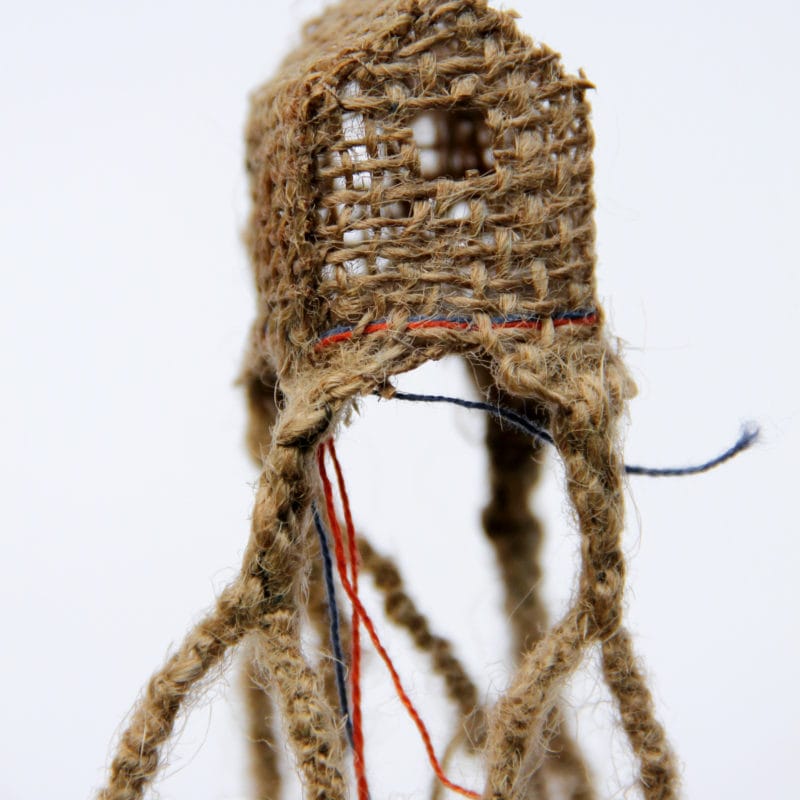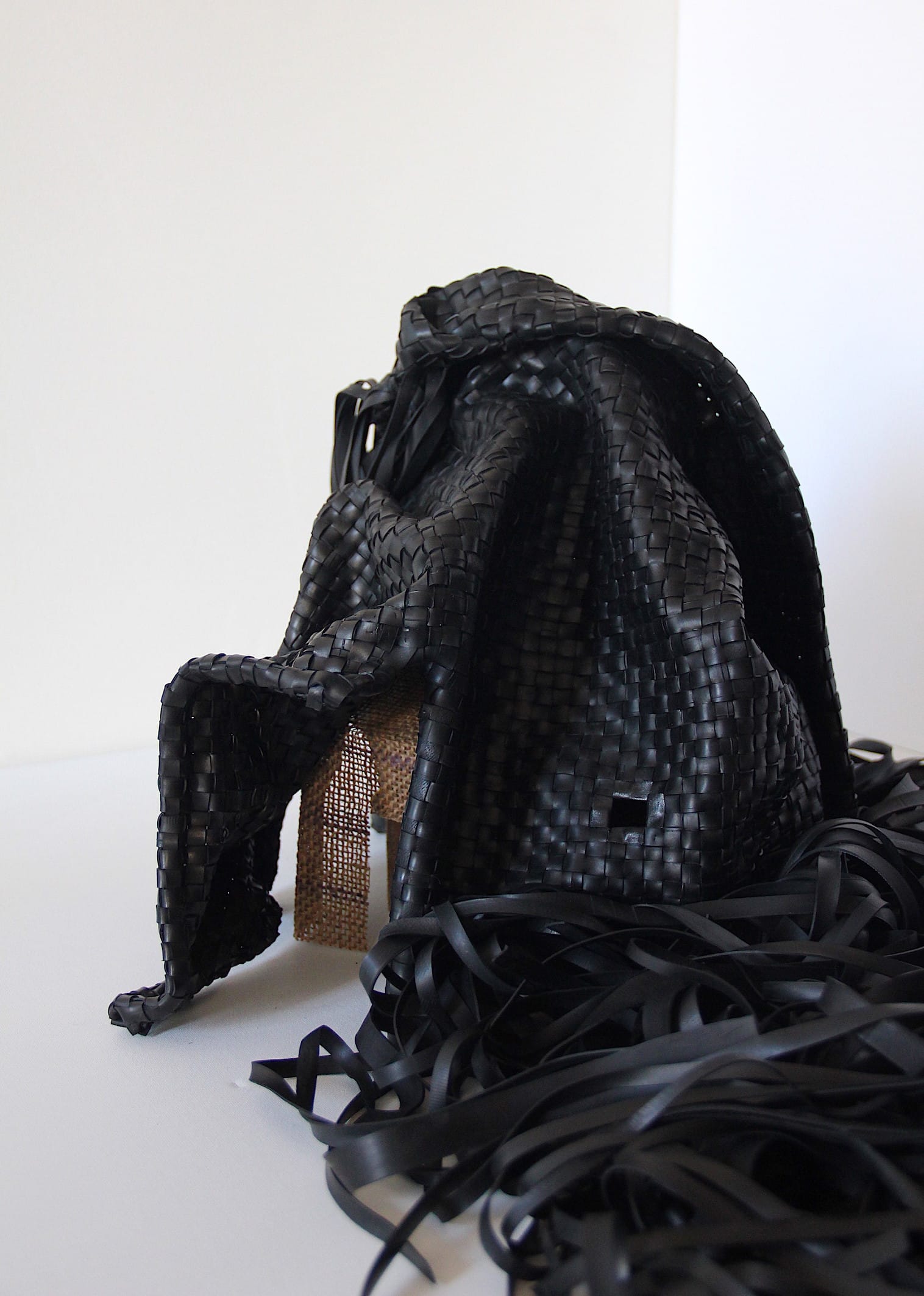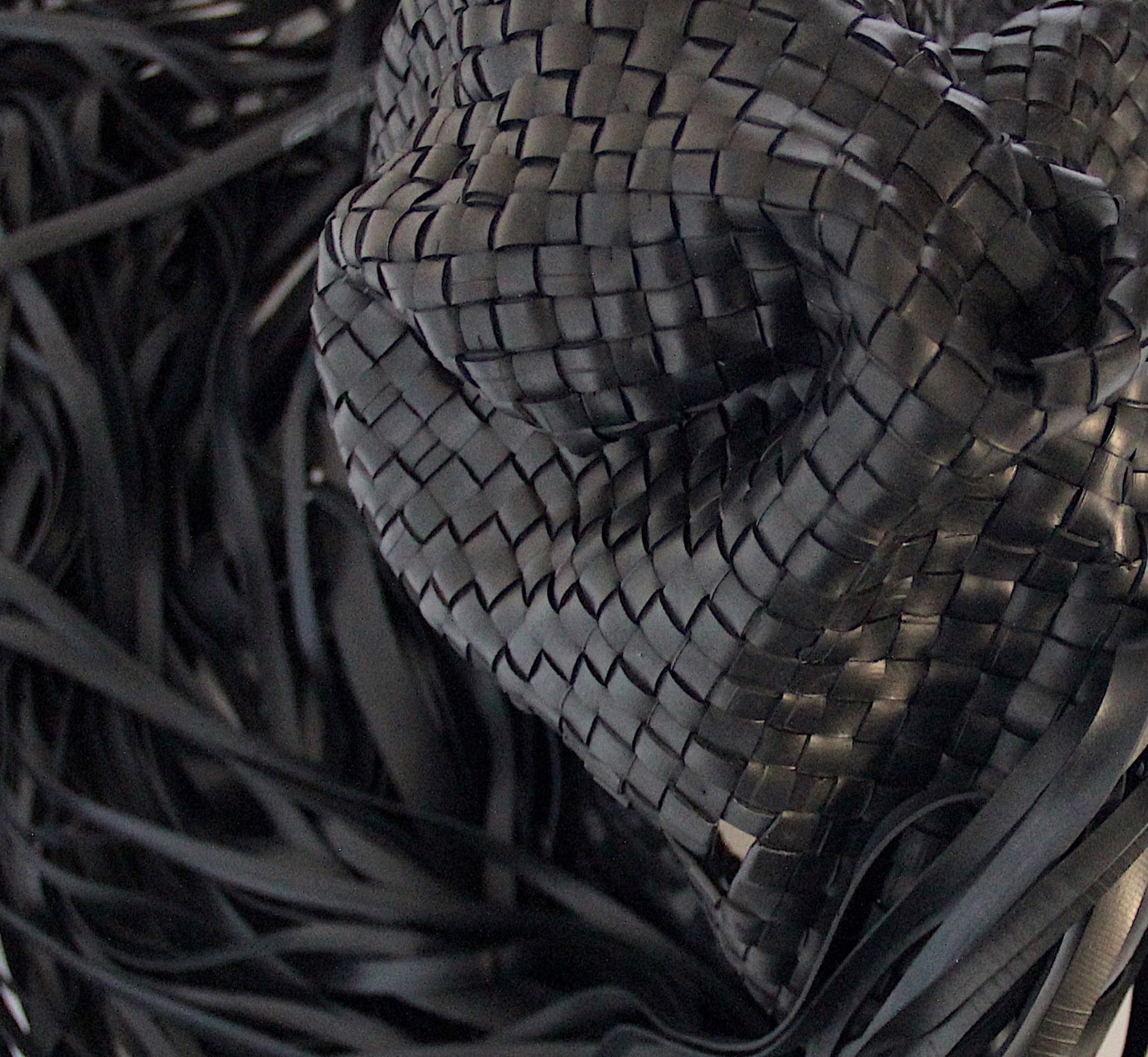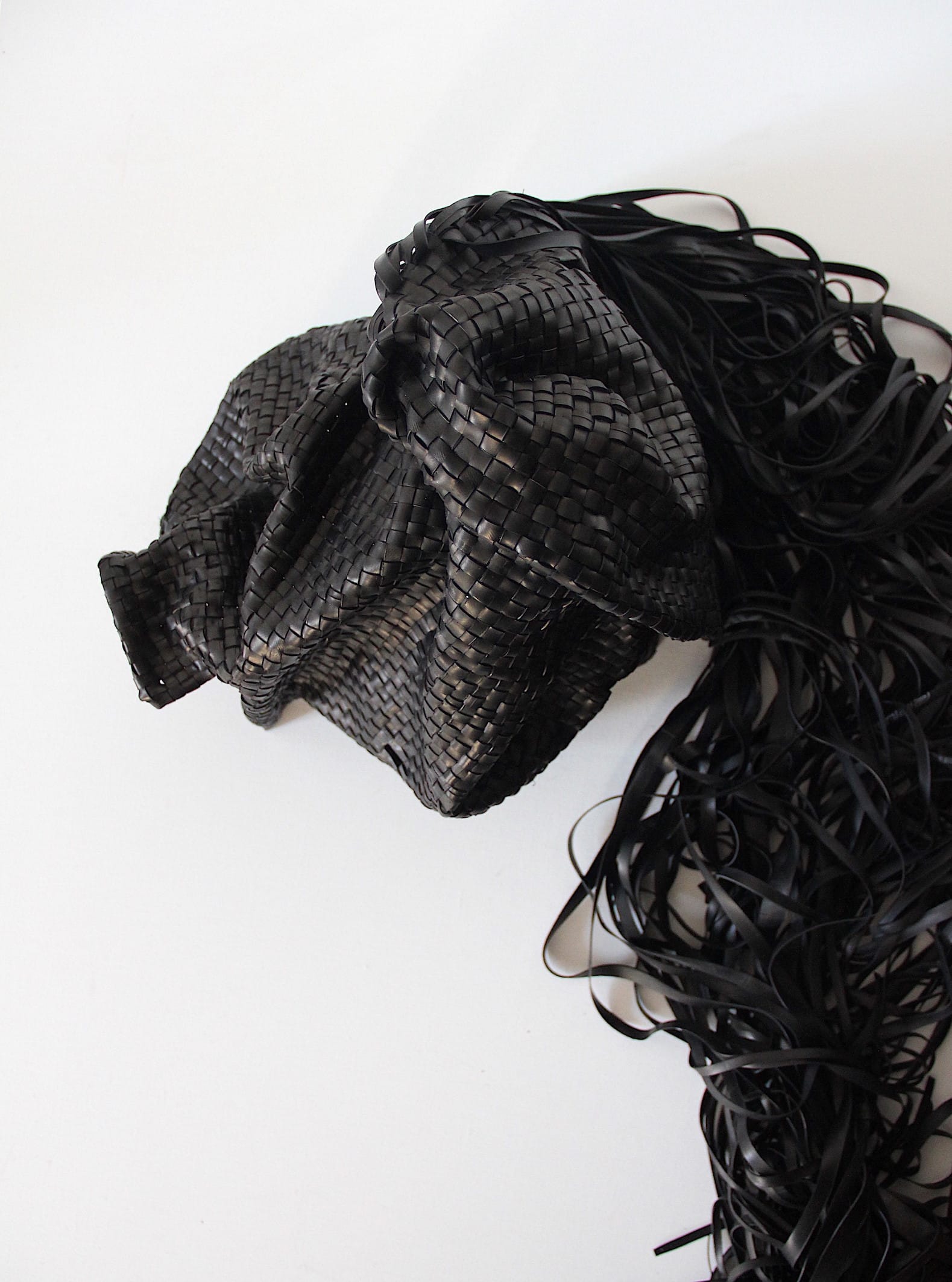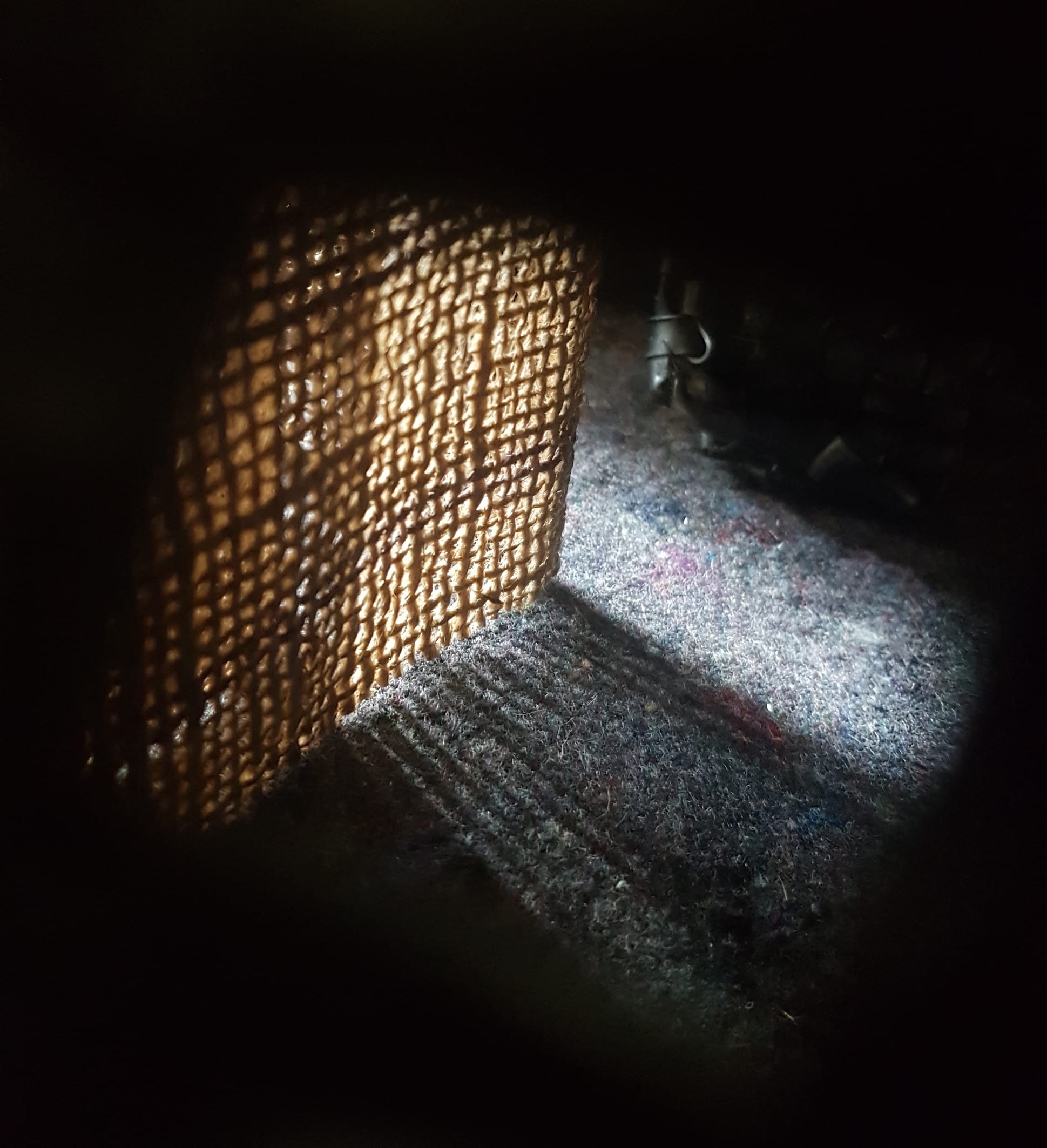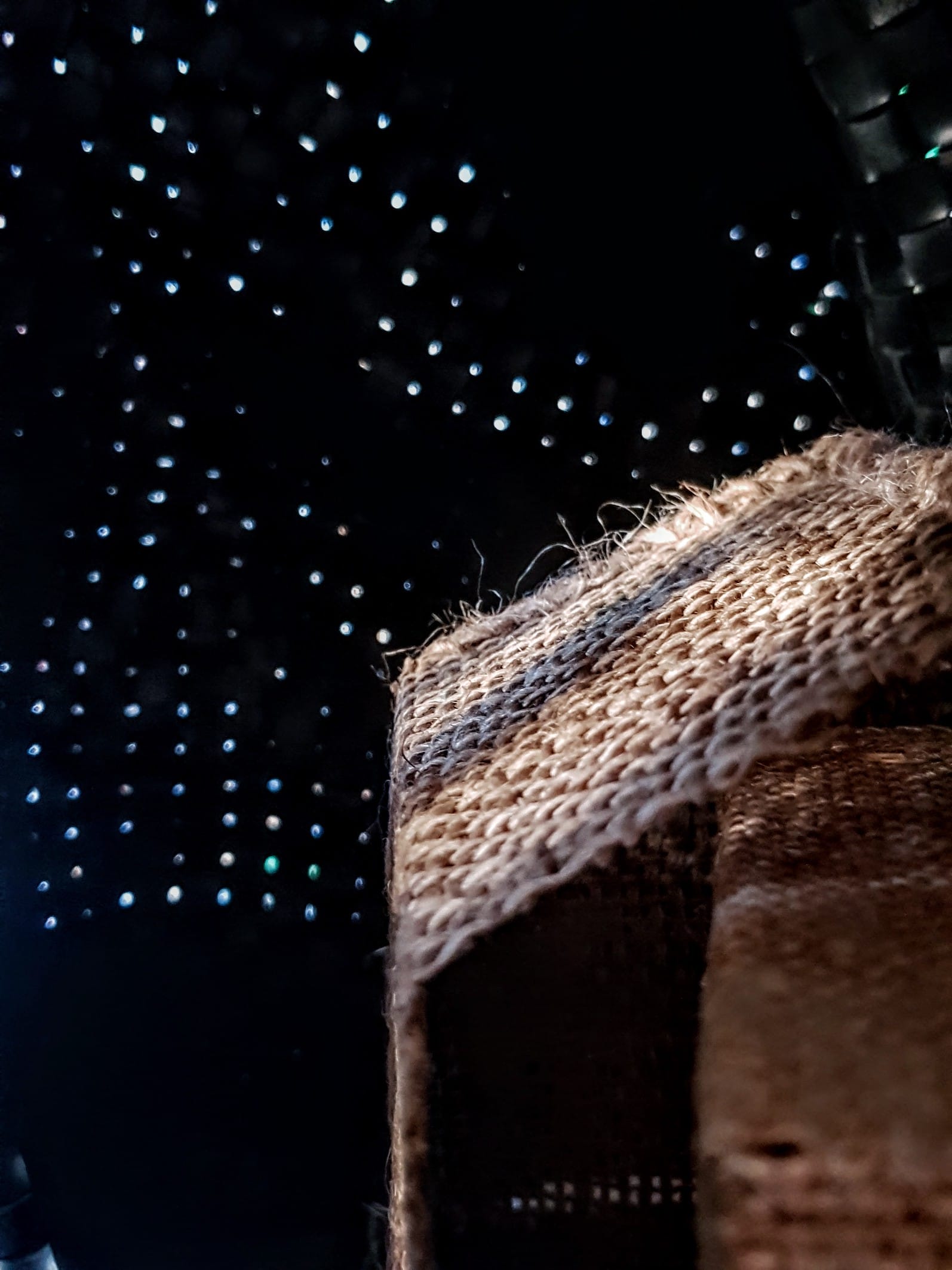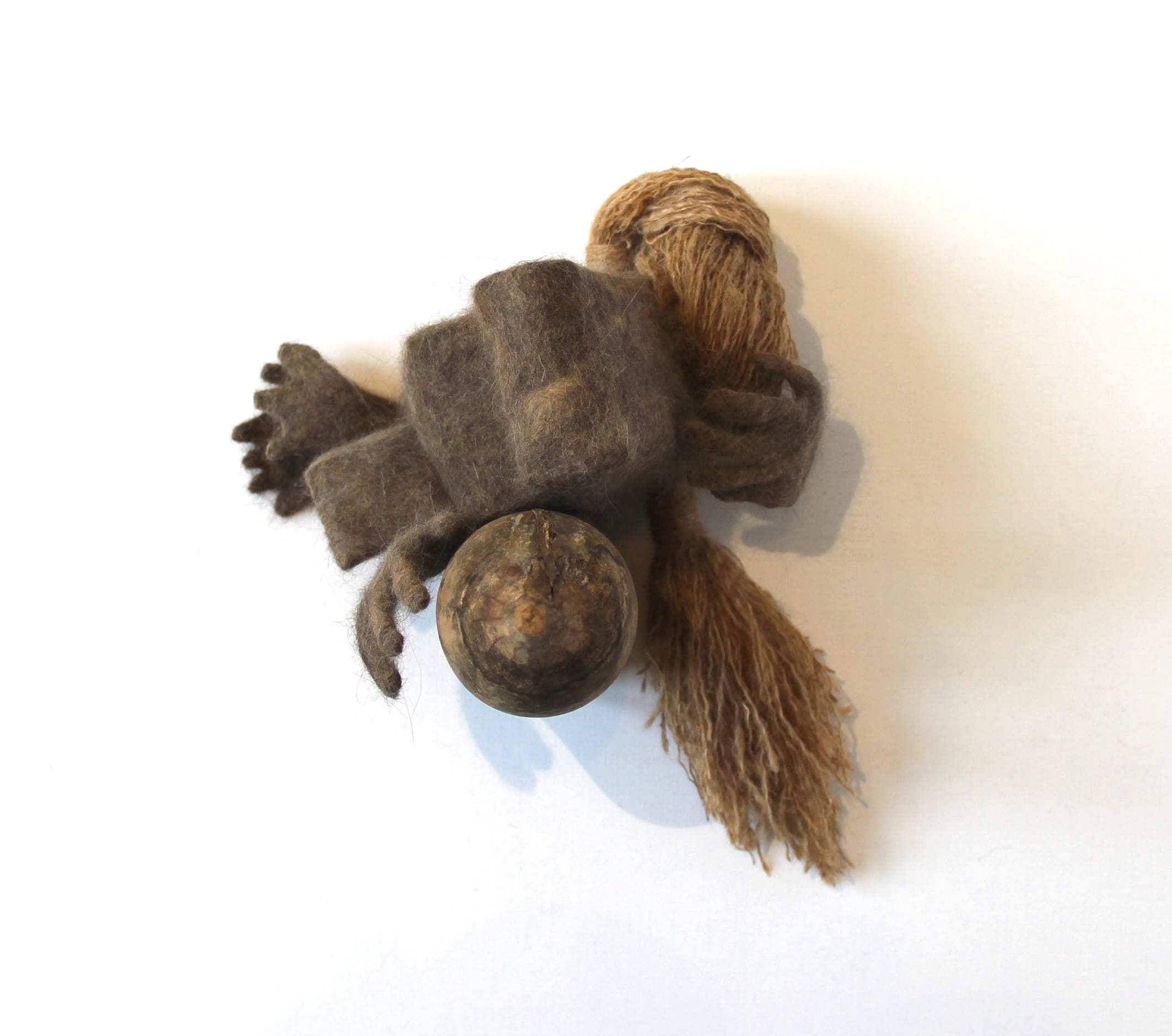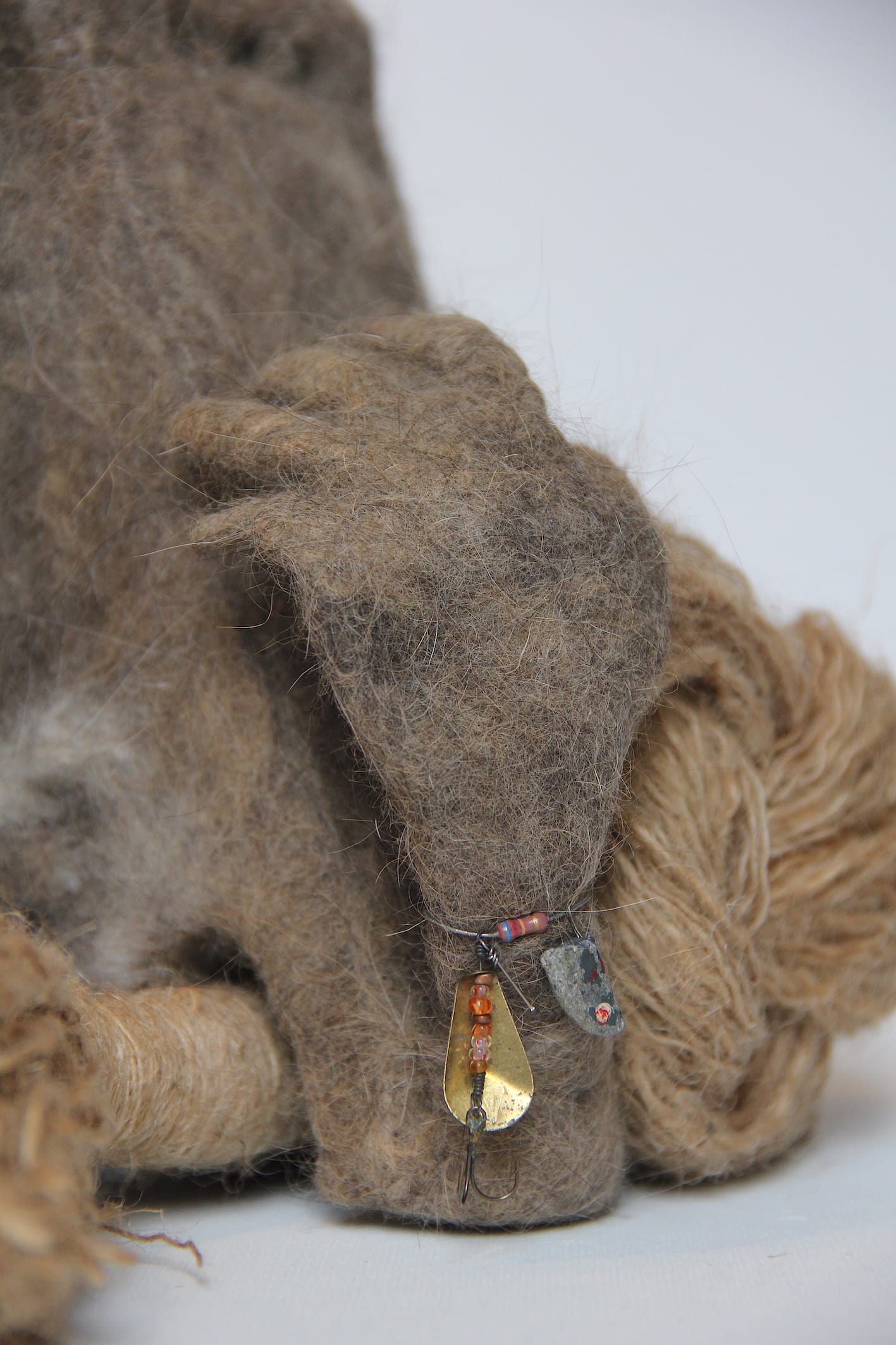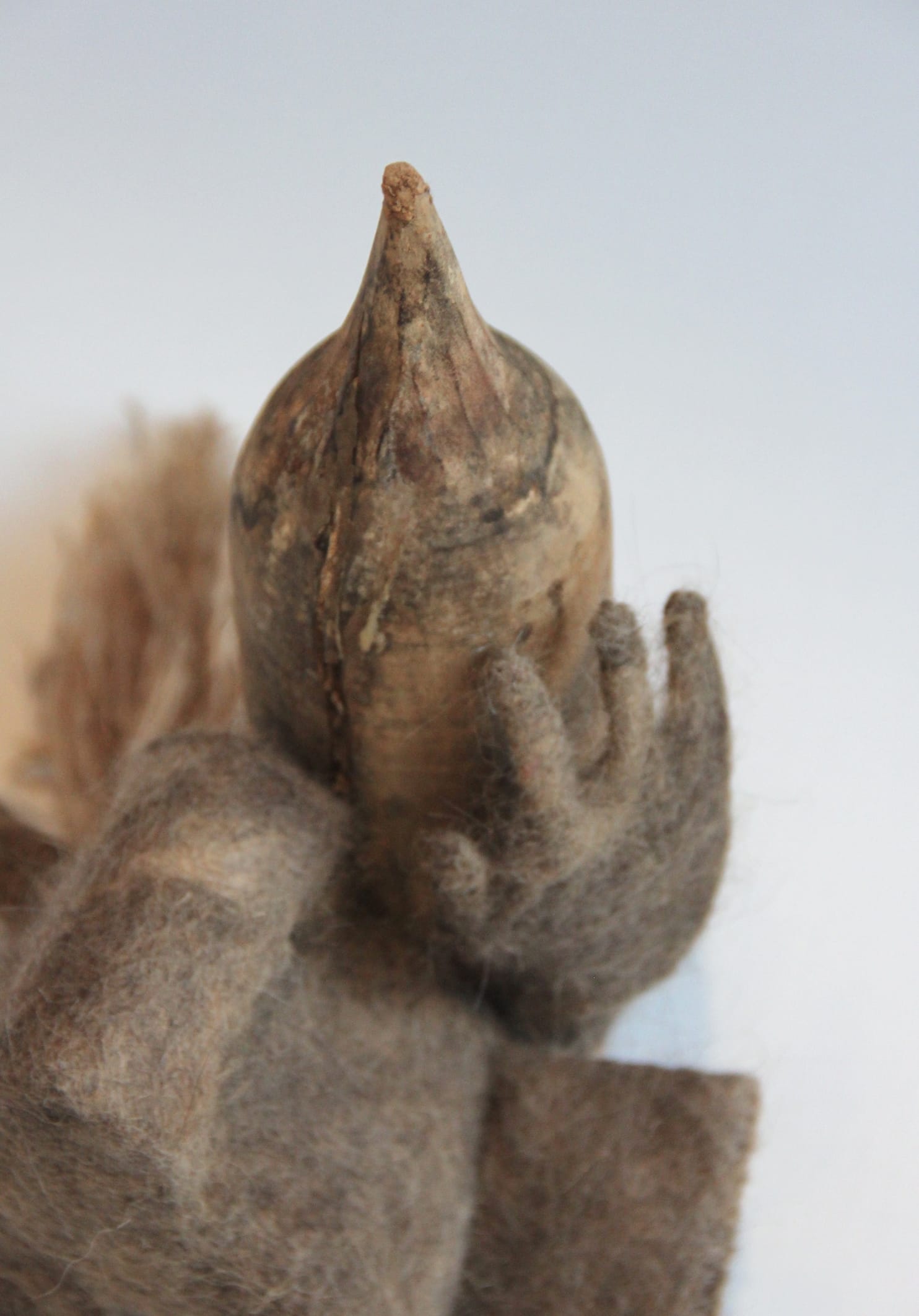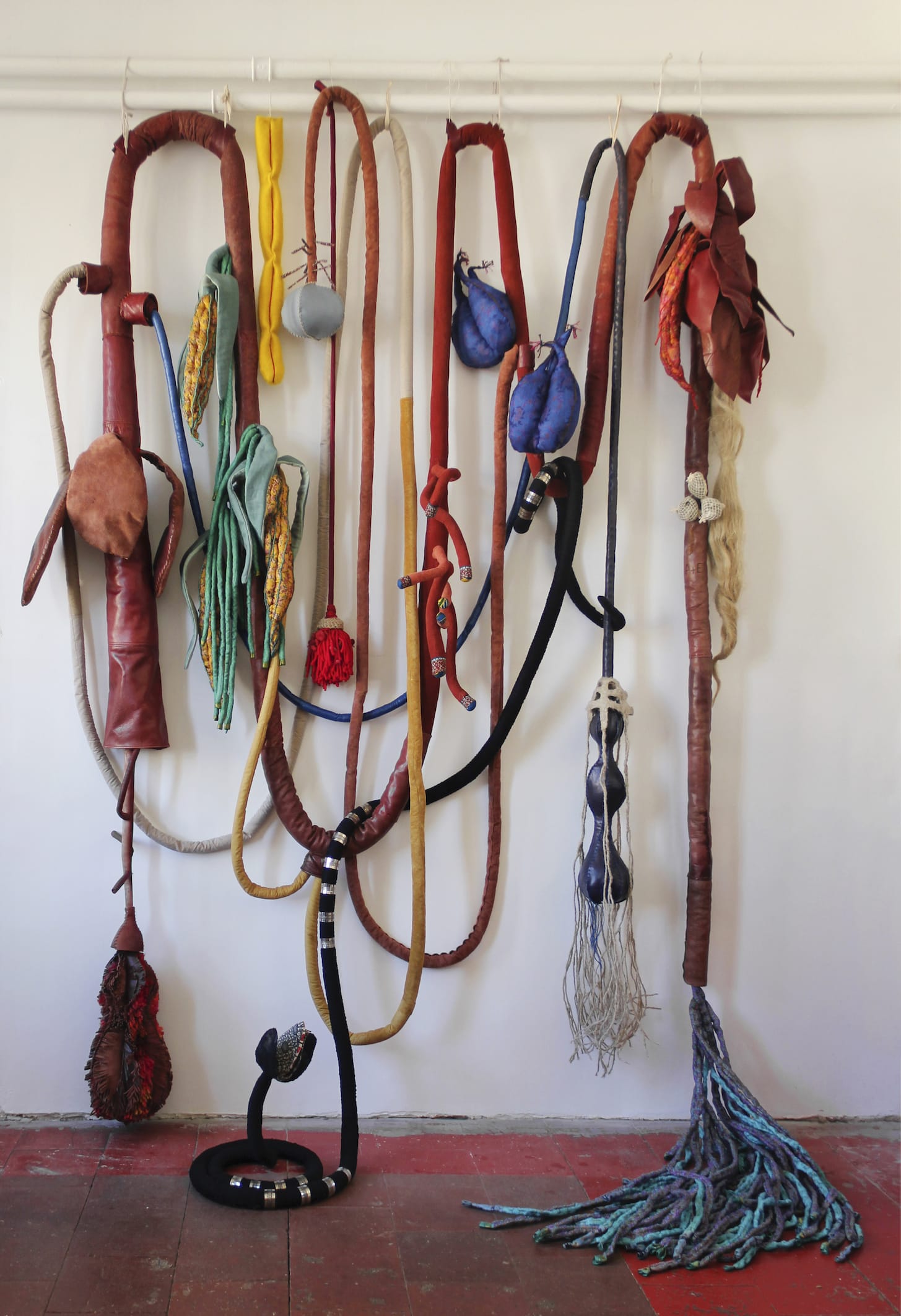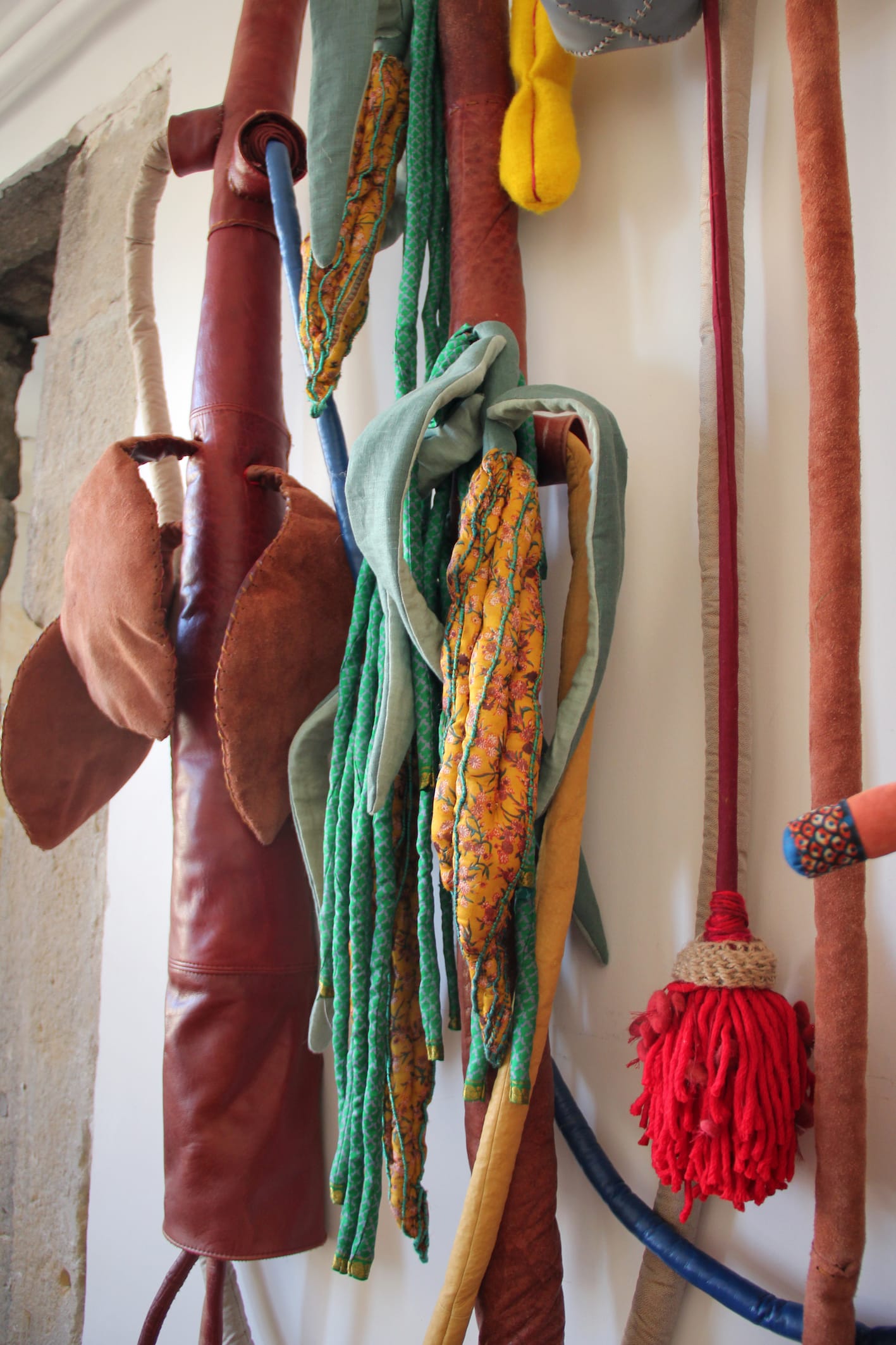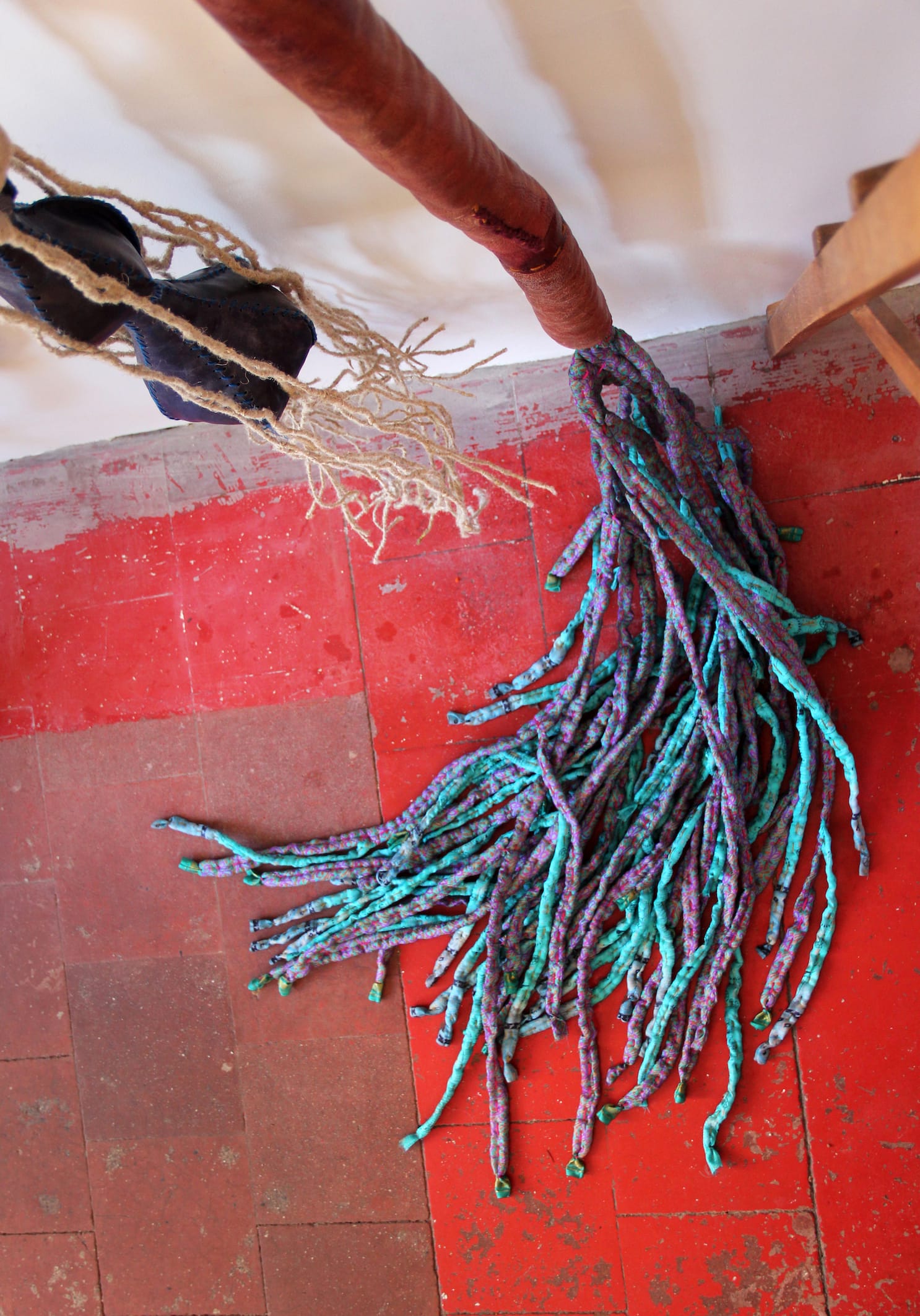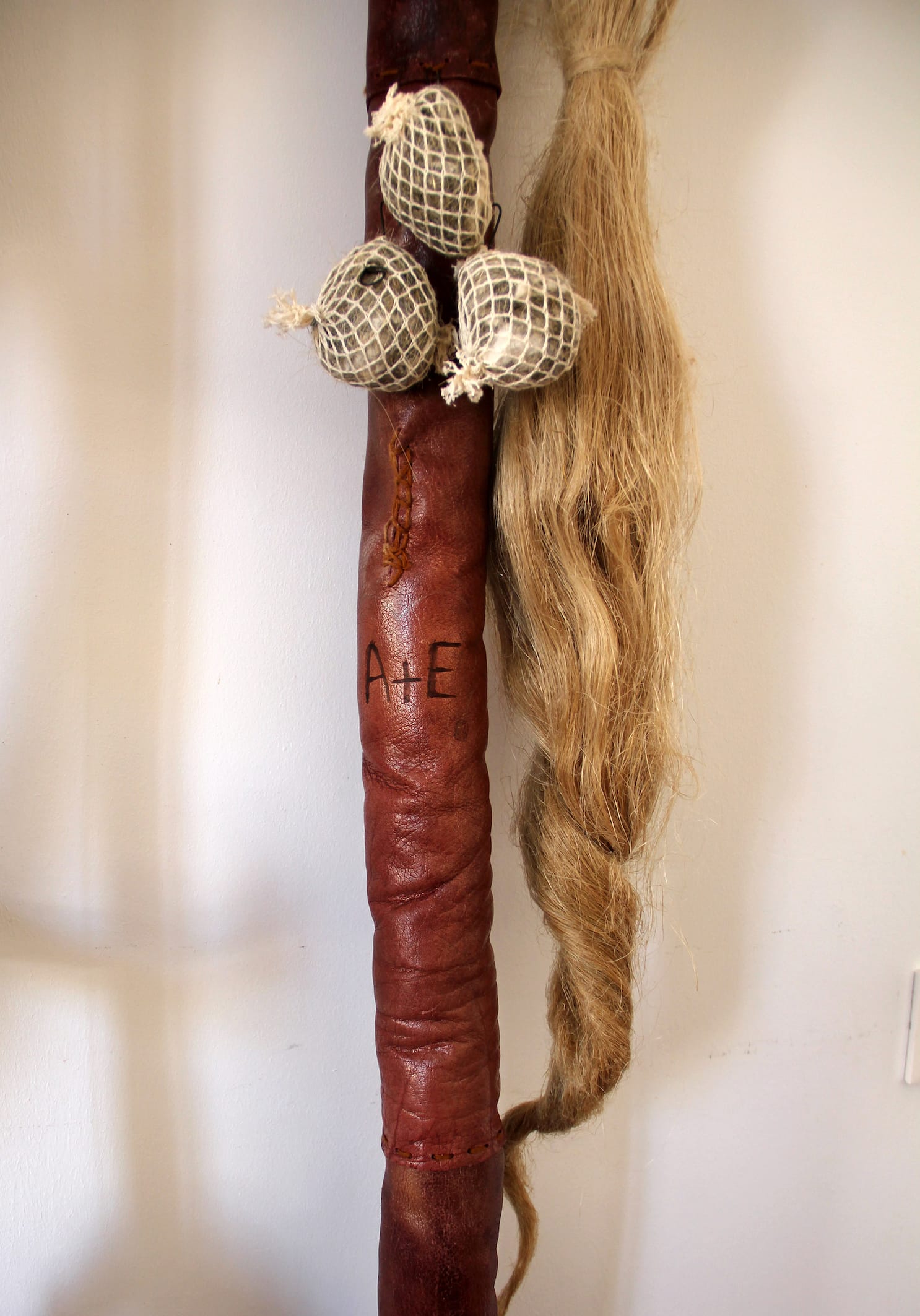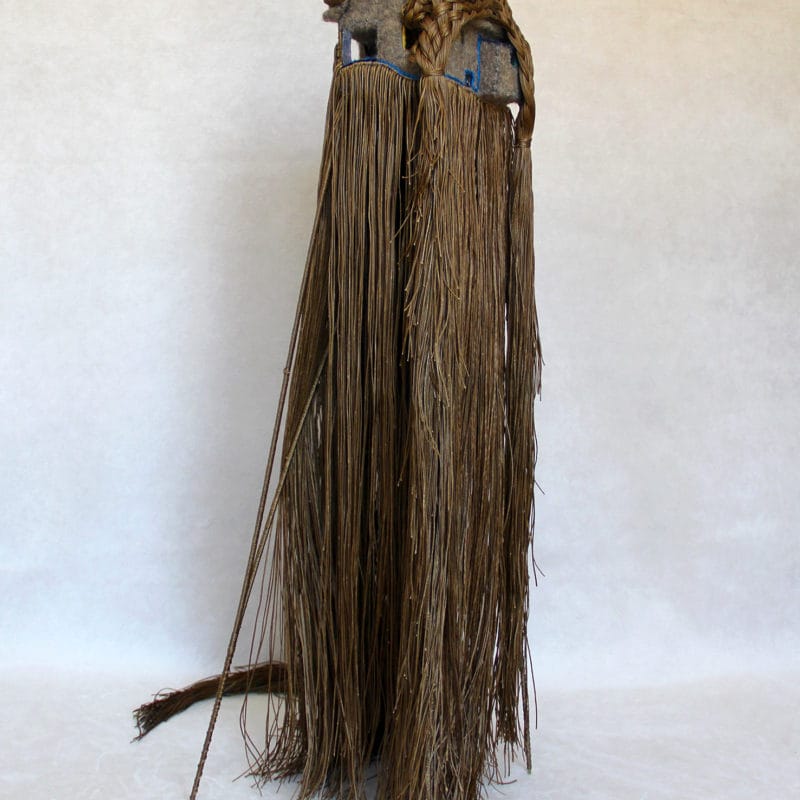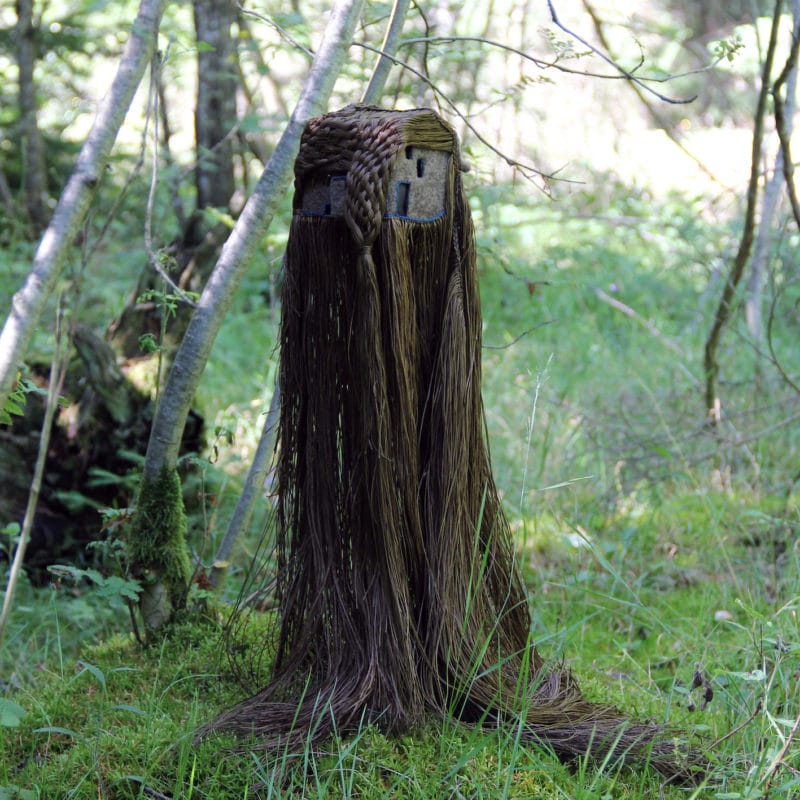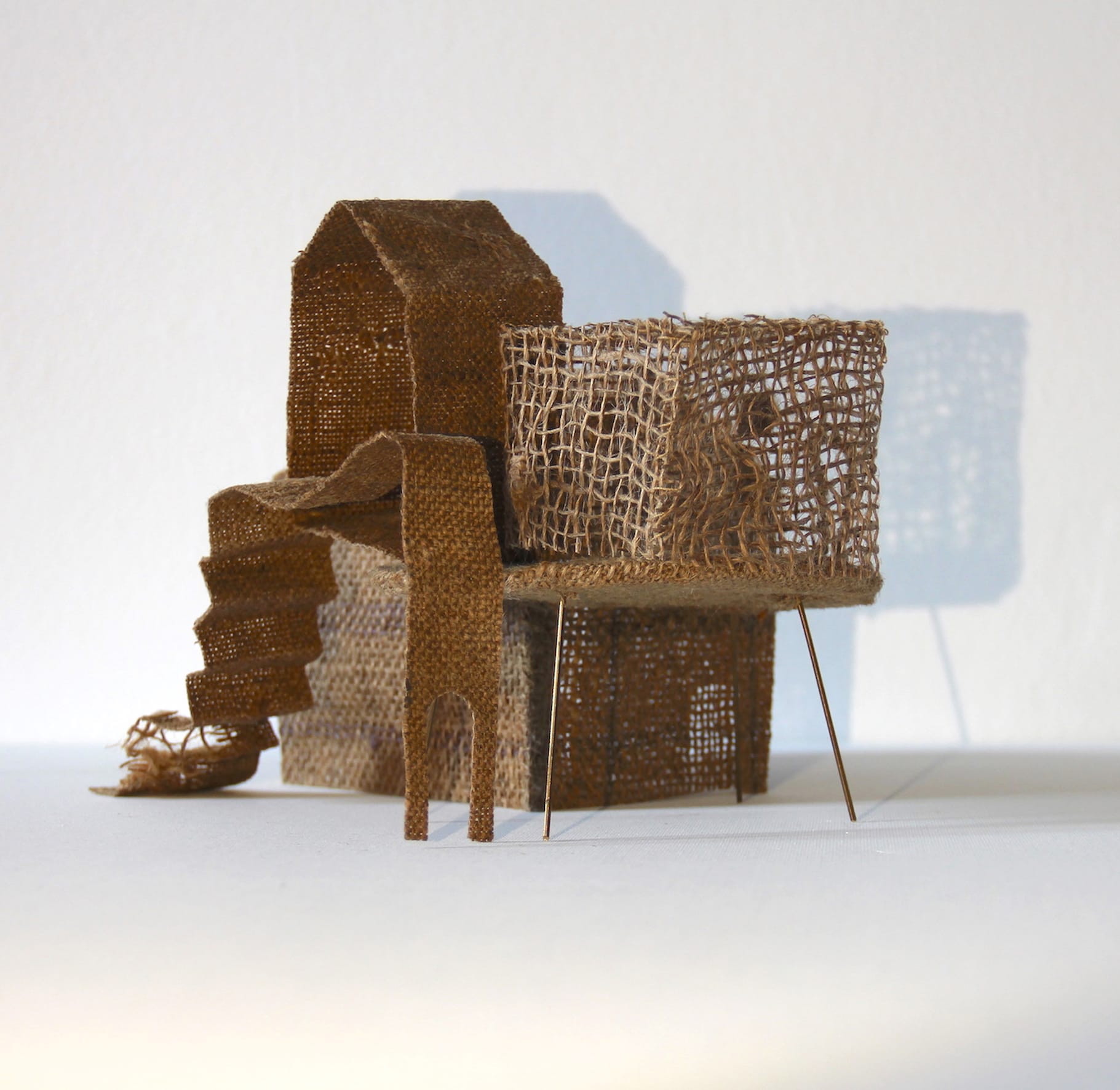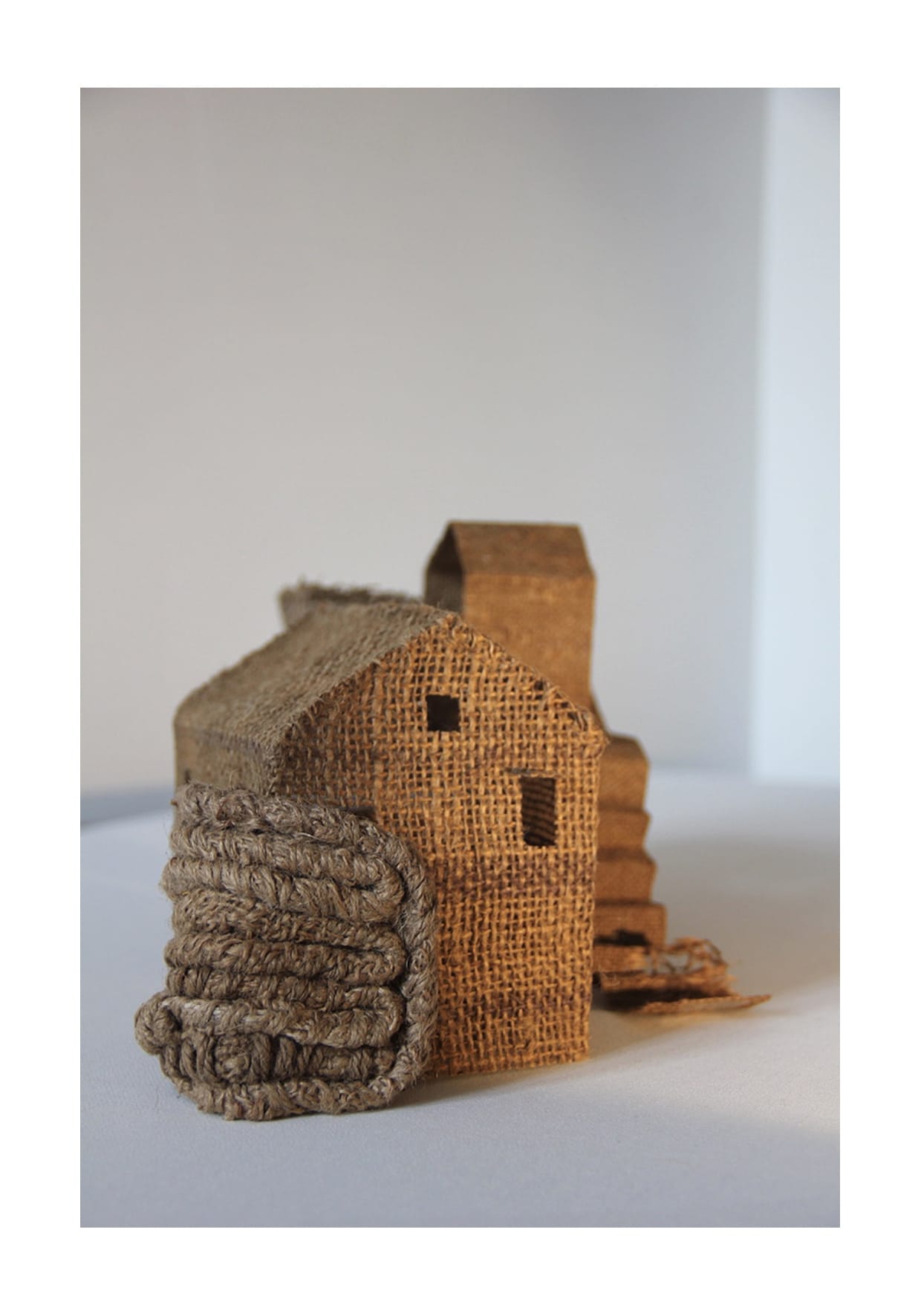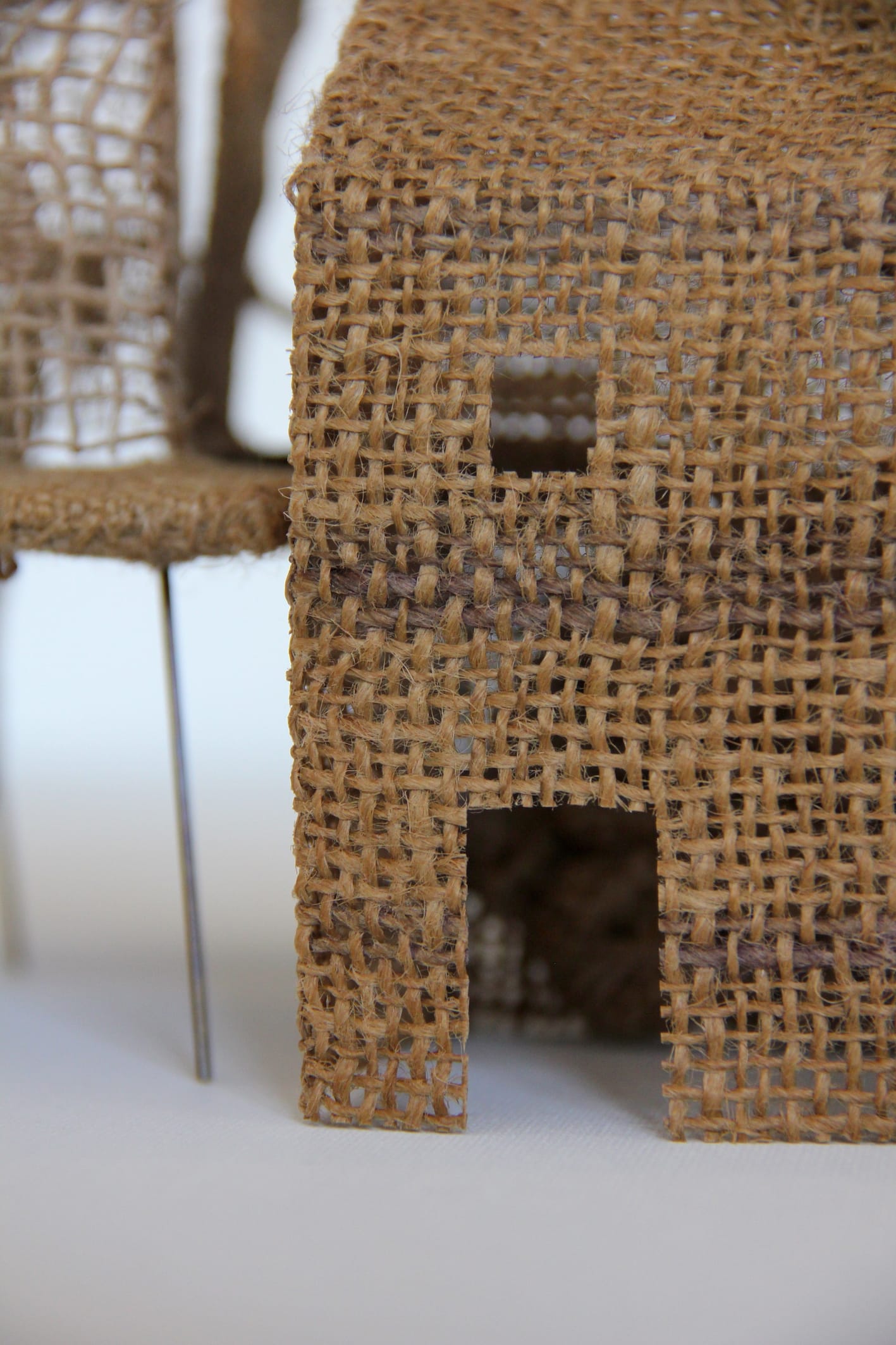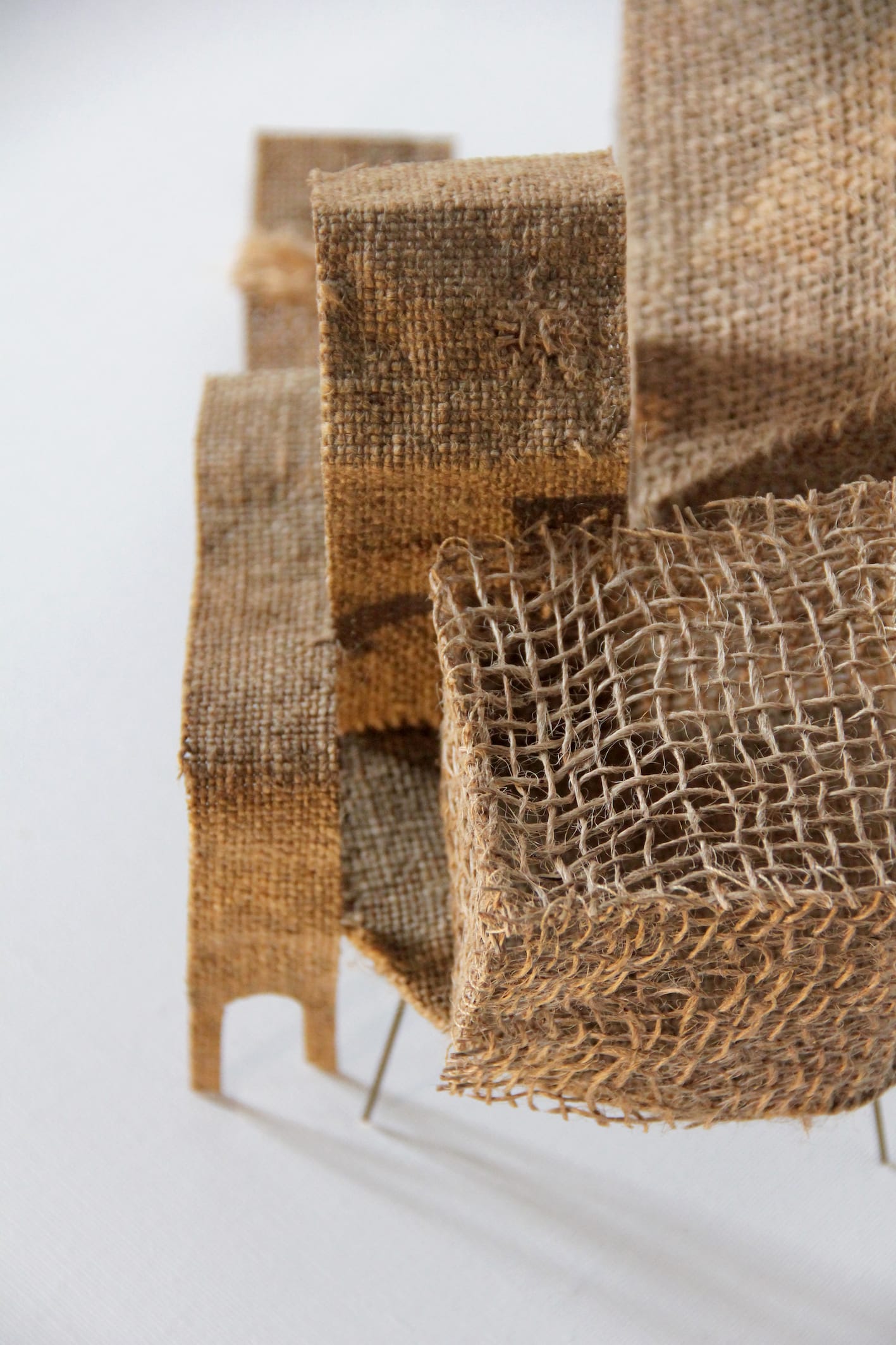Lucie Richard-Bertrand:“I work, experiment, create. This is where all my energy must be concentrated”
Translation by Marina Dlacic
With her work Hara House, the French artist Lucie Richard-Bertrand has received a prestigious award: the Arte&Arte 2020 award at the 30th edition of Miniartextil, Como.
With a degree in Architecture from Saint-Etienne in 1997, Lucie began her artistic career as a textile designer and seamstress, but she decided to devote herself completely to her art after a long stay in China where she resided for more than a year in 2010.
The deep bond with the world of textile craftsmanship has led her to develop a special feeling towards the materials that she manipulates and transforms instinctively and thanks to her experience as an architect, she builds, develops and creates the final work.
Below is the link to the artist’s website:
Lucie, you are trained as an architect. What was the path that led you to become an artist?
It has been a long journey, during that time I had to find my new identity, get rid of common beliefs and plans already made, to build a “savoir-faire”, to make important connections both on the personal and intellectual level. It took me almost 25 years after I completed my studies in Architecture.
I grew up thinking I didn’t have any immagination. Both as a child and as a teenager I enjoyed doing many artistic activities but they were always reproductions, wheter it was drawing or playing music or making bricolages with cardboard, beads, yarn or papermache….because I was living in a family without any artists, I didn’t realize that I was just training my hands to develop their own mind, that I was training myself to be creative.
When I was young, I thought it was inconceivable to dwell in anything artistic. Becoming an architect was probably my way to break into that world. Later in life I experienced again the joy of working with my hands while making outfits during my first pregnancy. Couldn’t be more trivial than that! Being able to stay with my child seemed like a sign so I decided to give up my job and stay at home with my son. Sewing has been a way to rediscover the pleasure of making things, still very important to me. The activity of making something with fabrics for a purpose has been my path for a few years in an artisanal and professional way, then slowly it has transformed and gone beyond that….at the beginning of a long introspective journey: a time in my life that would already be enough material for a book, where I question myself as a mother, woman, wife, lover and at the same time long to be free, make connections and adventures.
This intimate reflexion has been a true sparker. I started writing, writing songs, singing, reading anyhting, and the hurdles I put on myslef started falling one by one. At the end, 18 months spent in China convinced me once and for all to dedicate myself to artistic creations. After that it was a matter of deepening my practice and my knowledge, avoiding the tendency to get side tracked in other activities. I have such a desire to explore in all directions that one life time is not enough….
For this reason I recently decided that my work is worth it and have been sharing it beyong my intimate sphere.
On the occasion of the thirtieth edition of Miniartextil, the jury awarded the 2020 Art & Art Award to your work “Hara House” which will thus become part of, among other things, the prestigious Bortolaso - Totaro Collection.
The theme of the house is recurrent in your works, I am thinking for example of the works “Kashuba”, “Habitat” and “Cabanes”. Can you tell us what inspired Hara Housein particular and how the idea for this work was born?
When I decided to submit something to Miniarttextile I was doing some testing for a project with high symbolic content.
You must know that I have been practicing a special routine, a type of chant that takes me to a modified state of consciuosness, often with visions. It was a specific intent towards my ancestors during this practice that led me, last winter, towards the shapes of a radical structure…. I must explain: I had the vision of an object and I saw myself manipulating it in very specific ways, like in a sciamanic rite. To go from the vision to the realization was a sign, to be able to hold it in my hands and repeat the same gestures.
Hara House was born from the meeting of 3 elements: the subject of the house, which has always been dear to me and that I want to continue exploring, the mysterious sciamanic object in process of development and te jute cloth, a medium that I had been using since last summer after coming across a deposit of old potato sacks in a mountain barn in the “Haute-Alps” region.
The materials have expressive and sensorial abilities that can emotionally influence the viewer by transmitting specific suggestions. What are the fundamental criteria and aspects that guide you in choosing the materials you use for your works? Why the choice of the textile medium?
I started sewing because I used to dance the flamenco and I couldn’t find proper costumes in France. In those days we couldn’t order online! I sew some for myself and other dancers… after that I continued making dresses and accessories. During those years I learned to use the textiles supports, to work with them, appreciate their quality and limitations, and owning them. I can’t say that one day I just decided to use the textiles as a support for my creation. They were simply there, more and more filling my boxes and my closets and at the end they became my painter’s board, the matter I would sculpt.
It didn’t happen by chance either. I have a deep affection for all textile materials. I think they have a strenght and a fierce beauty. Maybe because they come directly in contact with our body, they ask to be touched and stroked, but also because they are closely linked to our history, the history of humanity.
To go back to your first question, the choice of the material when I start working on a project is tied to instinct. I always start with something that I have in stock already. I look at a piece that I find interesting, and after holding it in my hand, I feel the weight and comfront it with other pieces. I take into consideration the relationship between colors, the fluidity, transparency and texture.
Sometimesthe choice is clear and sometimes it does not work at all.
In the end, it is more of an assembly work in which the work is born and gradually affirms itself than of an initial idea to which a precise material corresponds.
In your biography you say: “Beyond my intellectual tastes, I try to join the great tradition of women who, since the dawn of time, weave, embroider, sew, cut, assemble”.
Many artists try, unlike what you say, to distance themselves from the traditional idea of the woman who sews and embroiders, due to the stereotype that ends up confining these activities ( which in the past were exclusively “feminine”) within the artisan world, preventing them from being recognized for their artistic value and preventing their “creators”for being taken seriuosly. What are your thoughts about this?
If I love so much to work with textile materials its because they are deeply connected to the history of man. There is always a force that pulls me towards my origins, ” our” origins. To picture some men and women who with a bone needle in their hands work with an animal skin to make a dress or a charm or the roof of a cabin, that thought touches me deeply. I can’t explain it. Thinking of all the generations of women who have spinned, weaved, sewed and embroidered, it moves me equally. Yes it is true, its always been up to the women to do these jobs. I feel close to them, linked to their history. I feel the need for it, but even this is difficult to explain.
In any case, I don’t really feel the need to affirm my independence of spirit and my freedom as a woman through my artistic work. I have already waged this fight elsewhere, in other fields, and I have already won it.
Maybe coming from the world of craftsmanship and not having done any artistic studies, I am less sensitive to the question: “Who recognizes the value of my work?”. These stereotypes that you evoke, actually quite real, which limit and delimit, which relegate textile works to crafts and decoration, are the sad expression of an era in which a certain caste of the artistic world tries to keep itself in power by excluding. But in no case is it a question of the reality of the present creation.
Despite everything, being aware of this does not automatically protect us from the difficulties that these value judgments impose on us. Personally, I have come to terms with it … I work, experiment, create. This is where all my energy must be concentrated.
How has your work evolved over the years? Are there important stylistic, aesthetic or conceptual differences between your earliest and most recent works?
My work has evolved considerably, from the first creations of clothing, through my geographical maps, to Hara House. It has also simplified, purified, both in terms of colors and shapes. Over the years, I have undoubtedly acquired a capacity and a confidence in my means that allow me today to practice a more minimalist expression and gain in depth. One thing is sure: I feel much less the need to show what I can do than the need to prove something.
Also, as an artist, how have you experienced this difficult period of isolation and loneliness linked to the Covid pandemic? How has it influenced your work?
There was a first moment of amazement when I was totally focused on the health situation, anxious for loved ones and unable to create. Later I was able to organize my days to find the right balance between time for my family and time dedicated to my work, adapting my small studio in order to be able to find the necessary solitude . You shuld know that, working from home, in a room open to the four winds, my family is often extremely present!
In the end, fortunately, the impact on my work was relatively small. One thing is certain: this pandemic has strengthened me in the belief that our way of life must change radically, a fact that will necessarily have an impact on my future achievements, despite the fact that they have already been part of an ecological movement for some time.
What are your main sources of inspiration? Are there artists or artistic currents that inspire you?
Nature, in all its forms, mineral, vegetable or animal, is my main source of inspiration. Primitive art, in which we perceive all the beauty that man is able to produce with what he finds around him. And then artists, more or less contemporary to my generation. I have no particular references. Most of the time I discover someone’s work at an exhibition that has been recommended to me, other times by
chance, for example during a search on the internet. I don’t necessarily try to remember their names, but the beauty of their work penetrates me, nourishing me deeply.
Is there one of your creations that represents you best and that you care most about? On the other had, among the various works you have created over time, is there one in which you no longer recognize yourself and which you feel removed from your current style?
I have a particular affection for “L’Americaine” which opens the series of houses. How I quarreled and doubted with her! I have hesitated several times to abandon it, at different stages of its realization. It was crucial, because it allowed me to overcome certain limits in my creative process.
But each in its own way, each realization has its place in my path. Even if today I feel quite distant from my first works, I know that they all have a place in the construction of my artistic path.
In your experience, does the textile medium have expressive limits?
If it does, they haven’t affected my personal expression so far. The possible explorations seem endless … I have the impression of having more ideas than time to make them! This is my main source of frustration, not having enough time. Of course, there are all sorts of technical limits linked to the material itself, but my experience as an architect has taught me to build, to create, starting from a multitude of constraints. Limits form a support, a ground on which I can develop my skills.
What are you working on right now?
At this moment I am continuing the work on the root houses. I have the impression that there is something to dig there … I am certainly in it for quite a while, given the long manufacturing times … This famous shamanic object about my ancestors is still boiling in the pot , its realization has been interrupted and is just waiting for me to take it back. I don’t know where it will take me.
And then other houses, for now in a corner of my mind and patiently waiting their turn … In a more distant future I would like to develop my work in two directions: by creating much larger pieces that bring into play the relationship with the body and space, and then by creating works on the outside, in a spirit of more intimate dialogue with the nature.
